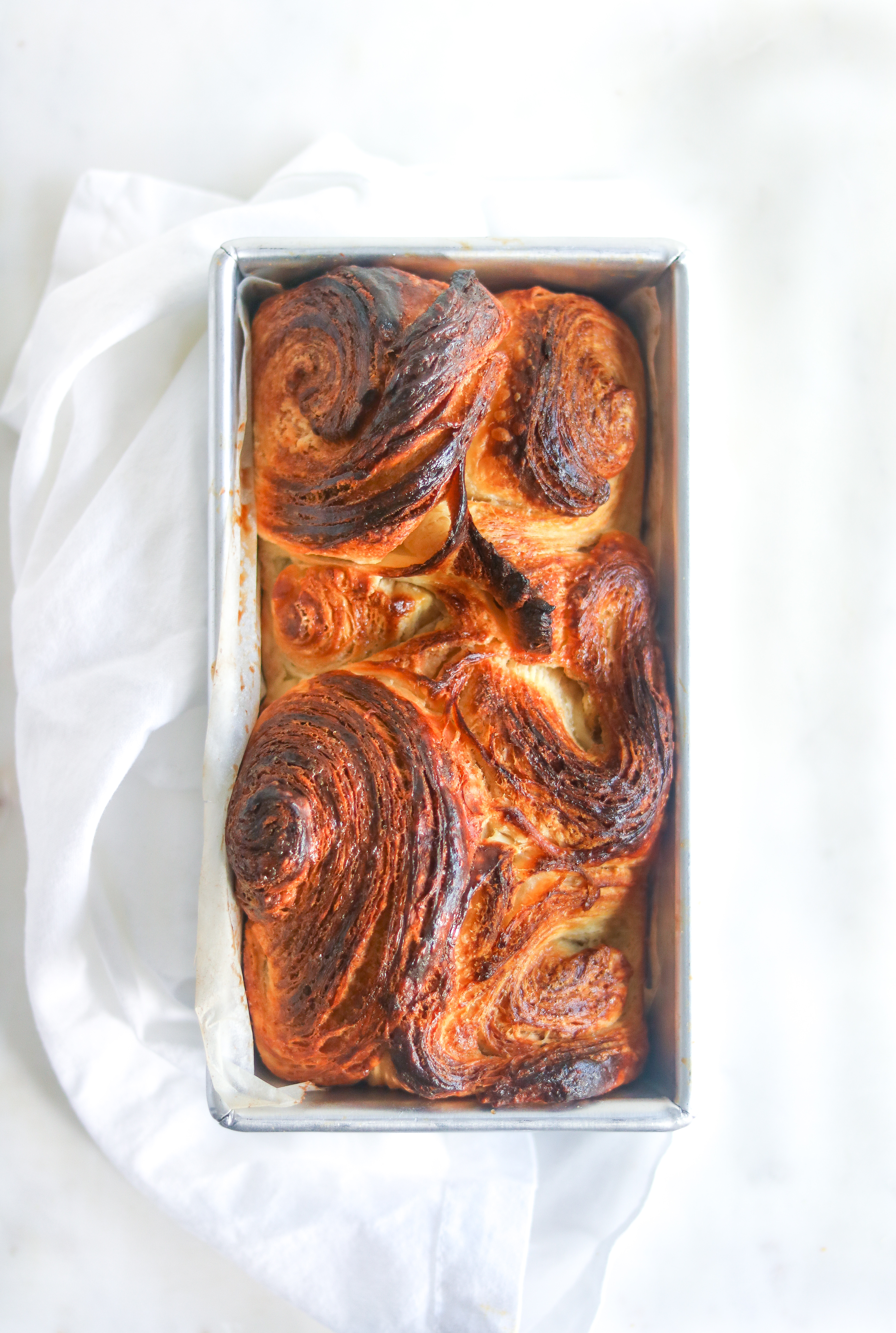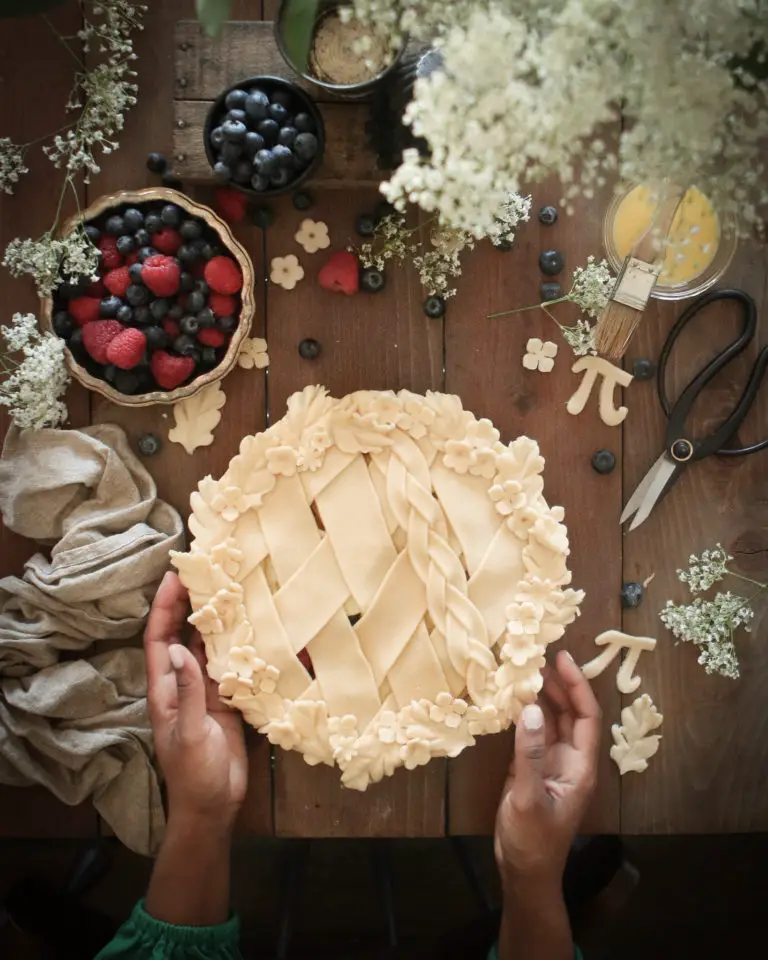
Okay. So, one goal I set for myself was to work on my croissant making because I really want to master it. I’ve only used all purpose flour in the past, so this time I decided to use King Arthur Flour bread flour this time around.
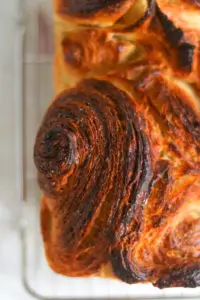
I went with a fabulous croissant recipe by Erin Jeanne McDowell . She knows so much about baking and has written a great book called, The fearless Baker.
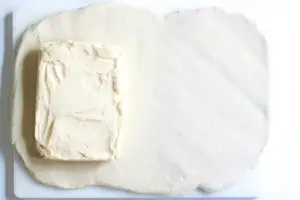
Croissants typically take 3 days to make. The first day is to put the dough together. The second day is to complete all of the folds to incorporate the butter into the dough. the third day is when you actually shape and bake the croissants.

You start the croissants by mixing all of the ingredients in a standing mixer and refrigerating it overnight. Take the dough out the next day and roll it out into a rectangle, and place the butter block on top to start the folding process.

But, when it was time to roll the dough with the butter block, it was so hard to roll it out! I couldn’t believe it. I was basically putting all of my weight on the rolling pin while pushing it. Somehow, with my husband’s arm power helping me, I was able to make all of the folds. But when it was time to cut and shape them, it was almost impossible! Now I see why all those bakeries have that rolling machine! I need one of those!
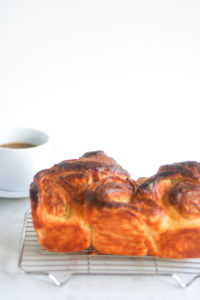
I cut the dough into the triangles, but could not roll them into the infamous croissant shape because I couldn’t roll the dough flat enough. So I rolled them as best as I could and placed them roll side up in a loaf pan, making a Croissant Loaf. I loved the look of the loaf after the dough was in.
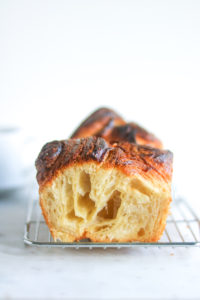
But… after it baked… It…Was…So….DELICIOUS!!! The texture was just like a bakery croissant! Erin actually gave me an explanation and some tips on the baking process. She said: ” Bread flour has a higher protein content than all purpose, which means it holds up better in distinct layers during the folding process than all purpose. It also makes the overall structure stronger which can provide a more powerful lamination in the end. If your dough is really difficult to roll out, it might be too cold and/or hasn’t been rested long enough. You don’t want the dough to be super warm, but if it’s too chilly, the butter is hard inside and can be tough to roll. If you don’t let it rest long enough, the gluten hasn’t had enough time to relax and can give you some trouble!”
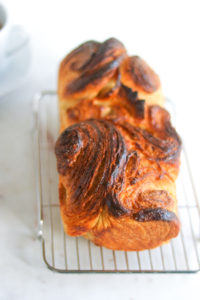
Here is the Link to Erin’s recipe and how to complete all of the folds of the dough with pictures. Make sure to click on the Link before you try the recipe.
So, I will definitely take her advise for the next next. Can’t wait to try again. Stay tuned!
Croissant Loaf
Dough
- 4 3/4 cup bread flour
- 1/3 cup sugar
- 1 tbsp yeast + 1 tsp
- 2 1/2 tsp salt
- 5 tbsp butter + 1tsp, softened
- 1 2/3 cups cold milk
Butter Block + Finish
- 4 sticks butter
- 2/3 cup bread flour
- egg wash for finishing loaves
Dough
-
Add all ingredients for the dough in a standing mixer. With a dough hook attachment, mix dough. After blended raise the speed, and let the hook knead the dough for 3 additional minutes.
Place dough in a greased bowl. Cover and refrigerate overnight.
Butter Block
-
Let the butter soften, but not to room temperature. Add flour and mix until incorporated. Cut a piece of parchment paper about half the size of a baking sheet. Spoon butter into one half of the paper. Shape it into a rectangle. Cover the butter with the other half of the paper and fold edges under to seal. Refrigerate until firm, but still pliable.
Perform the “lock in”. Make the three folds, and refrigerate overnight.
The next day, Cut the dough in half. Each half makes one loaf. Roll out one half of the dough. Cut in into 6 strip and roll them up. Place them roll side up in a parchment lined loaf pan. Repeat with other dough half, or wrap with plastic wrap and zip in a plastic bag and freeze.
Let the dough rise in a warm place for about 2 hours. Brush with egg wash. bake in a 375 degree oven for 35-40 minutes. Cool on a wire rack.
